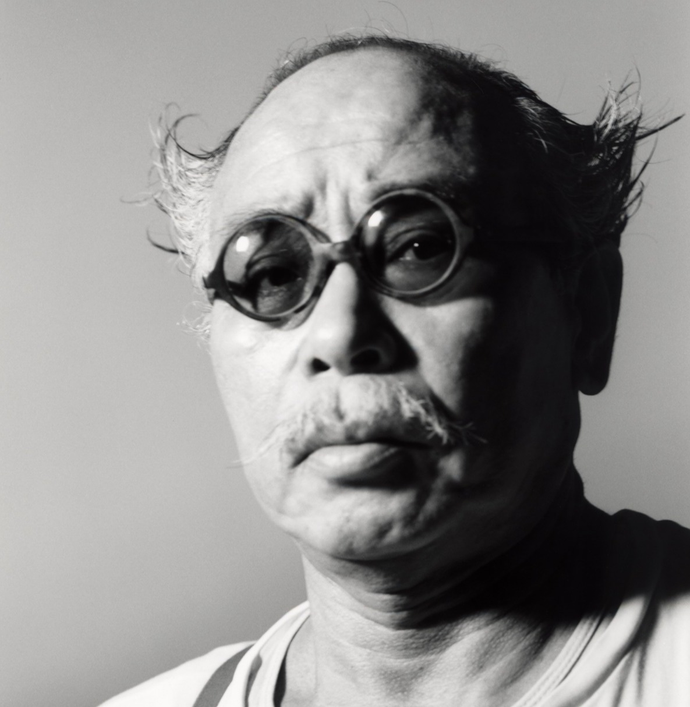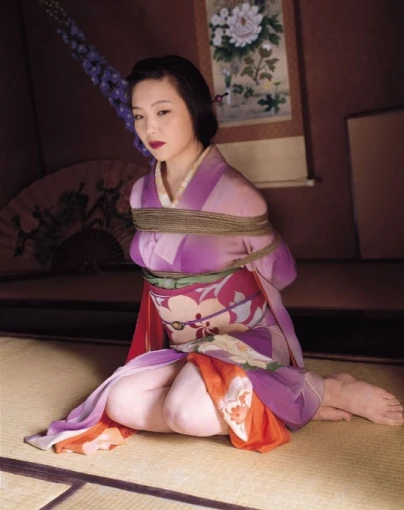
Nobuyoshi Araki
Nobuyoshi Araki, the celebrated Japanese photographer, has gained international recognition for his boundary-pushing and thought-provoking work. He explores themes of erotism, intimacy, and the human body. Since the early 1970s, Araki has published over 400 books, showcasing his unique vision and unwavering commitment to his craft.
Biography of Nobuyoshi Araki
Nobuyoshi Araki was born in 1940 in Tokyo, Japan. He completed his studies in film and photography at Chiba University (1959-1963), presenting a film titled "Children in Apartment Blocks'' as his final project.
Later Araki embarked on a professional journey that led him to the advertising agency Dentsu. As Nobuyoshi Araki's career progressed, he found himself yearning for greater artistic expression and a departure from the confines of his job. This longing for creative liberation led him to cross paths with the influential figures associated with Provoke magazine, including the renowned photographer Daido Moriyama. Araki was immediately drawn to the movement's rebellious spirit, which resonated deeply with his own artistic sensibilities.
In recent years, Araki had the opportunity to photograph renowned superstars, including Lady Gaga and Björk.
In a significant turn of events, in October 2013, Araki lost vision in his right eye due to a retinal artery obstruction. Despite this challenging setback, the indomitable artist drew inspiration from his experience. This led to the creation of "Love on the Left Eye," an exhibition held on June 21, 2014, at the esteemed Taka Ishii Gallery in Tokyo.
Nobuyoshi Araki's Art Style
Araki is a representative figure of the 1960s generation of artists in Japan, which emerged during a period of rapid economic growth and urbanization following the post-war recovery.
His photography often captures the essence of this era by featuring elements such as karaoke bars, Japanese toys, and vibrant Tokyo street scenes. Additionally, Araki frequently incorporates reflections on Japanese traditions in his work, drawing inspiration from both historical and stylized references.
He developed a distinctive style of image-making that he referred to as "I-photography" or "shi-shashin" in Japanese. This term represented his direct response to the "I-novel" or "shi-shōsetsu," a confessional literary genre that dominated Japanese literature during the twentieth century.
Arai's work frequently employs sexual subject matter. He depicts banal and deeply erotic subjects ranging from flowers and Tokyo street scenes to female bondage and his own biographical accounts.
Araki gained notable recognition for his captivating photographs that delve into the ancestral art of Kinbaku, the Japanese practice of bondage dating back to the 15th century.

Within Nobuyoshi Araki's expansive body of work, one series stands out for its poignant exploration of decay and mortality. Titled "2THESKY, my Ender" and created in 2009, this collection of photographs showcases Araki's unique artistic vision by incorporating salt as a transformative element.
In this series, Araki deliberately covers his photographs with salt, a material known for its corrosive nature. This intentional act serves as a metaphor for the passage of time and physical decline. By subjecting his images to the gradual effects of salt-induced deterioration, Araki creates a visual representation of his own mortality.
Araki has authored a multitude of notable photography books throughout his career, two of which stand out prominently. "Sentimental Journey" (1971) holds a significant place in Araki's body of work, documenting his deeply personal journey with his wife Yōko, capturing moments of intimacy and love. Another renowned publication by Araki is "Tokyo Lucky Hole" (1990), a provocative book that delves into the underground world of Tokyo's sexual industry, offering a gritty and unflinching portrayal of the city's hidden realities.
Controversies Surrounding Araki's Approach to Intimate Photography
Araki's approach to capturing intimate moments with his models has been a subject of controversy. In a 2011 interview, he boasted about gaining access to his subjects through sexual means. This statement sparked considerable debate and criticism within the art community.
One incident that shed light on the repercussions of Araki's behavior occurred in December 2018. The Angry Asian Girls Association, an activist group, protested the opening of an exhibition featuring Araki's photographs at C/O Berlin. They aimed to raise awareness of allegations made against Araki by Kaori, a model who had accused him of exploitation and misconduct.
Artistic Achievements and Recognition
Throughout his illustrious career, Nobuyoshi Araki has been honored with numerous prestigious awards: in 1964, Araki received the Taiyō Prize for photo reportage, as well as the Sun Prize; in 1990, Araki was awarded the Shashin-no-kai Prize by the Photographic Society of Japan; in 1991, Araki was honored with the 7th Higashikawa Prize, a highly esteemed accolade that acknowledged his remarkable body of work; in 1994, he was the recipient of the Japan Inter-Design Forum Grand Prix; in 2008, Araki was bestowed with the Austrian Decoration for Science and Art; in 2012, his talent and creativity were once again acknowledged with the Top Prize at the 6th ANGO Awards.
Araki's photography has garnered global recognition. His works have been exhibited in renowned institutions such as the Fondation Cartier pour l'Art Contemporain and the Centre National de la Photographie in Paris. His artworks have been included in significant public and private collections, including esteemed establishments like the Tate Modern in London and the San Francisco Museum of Modern Art.
Years:
Born in 1940
Country:
Japan, Tokyo